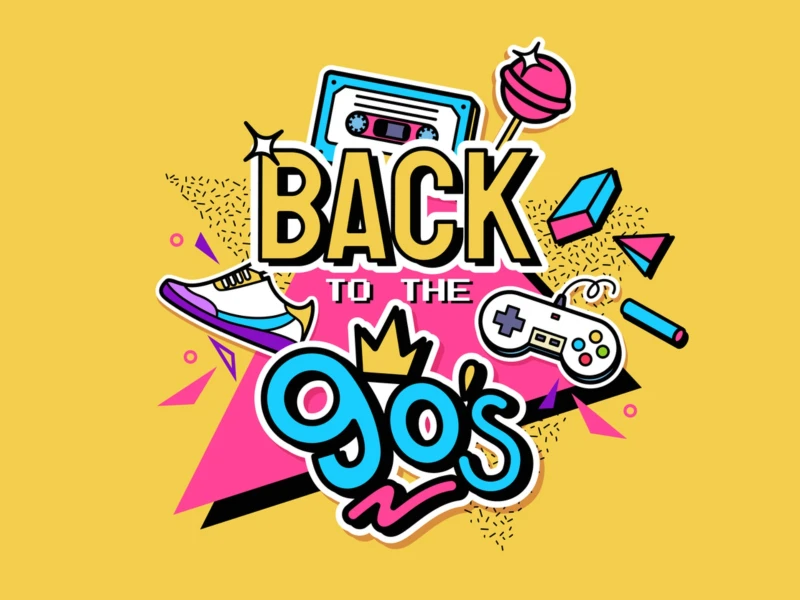If you grew up in Bangladesh in the 1990s, chances are your childhood was filled with chalkboards, tin lunchboxes, outdoor games, cassette players, and Friday morning cartoons on BTV. You didn’t have Wi-Fi or smartphones, but you had street cricket, “Meena” on TV, and the thrill of saving up five takas to buy chanachur after school.
They call you a “90s kid.” And today, this generation stands at a unique crossroads — carrying both the nostalgia of a simpler past and the adaptability to survive in the digital present.
What It Meant to Be a 90s Kid
Being a 90s kid in Bangladesh meant growing up in a time of transition. The internet had not yet invaded every home, and mobile phones were rare. Entertainment was simple but deeply memorable. Children swapped storybooks, traded “Tazos” from chips packets, and played board games like Ludo or Carrom during long power cuts.
School life was marked by handwriting practice, library cards, and waiting eagerly for annual sports day. For many, the morning meant cycling to school with friends, while evenings were reserved for street cricket, “gollachut,” or skipping rope in front of the house.
Nostalgia That Still Feels Fresh
The nostalgia of the 90s is not just about objects, but about emotions. The joy of listening to LRB or James on a cassette player, the excitement of Eid when new TV dramas aired, or the smell of freshly printed Tin Goyenda detective books — all remain etched in memory.
Friday mornings meant cartoons on BTV: “Meena,” “Molla Nasiruddin,” or imported shows dubbed in Bangla. During Eid holidays, many 90s kids traveled long distances by train with family, enjoying homemade snacks wrapped in foil, and the thrill of seeing relatives waiting at the station.
These small joys, though simple, carried a magic that many feel is missing in today’s gadget-driven childhoods.
The Difference With Gen Z
Today’s teenagers — Gen Z — grew up with smartphones in hand, YouTube as their babysitter, and Netflix at their fingertips. They have endless options, but sometimes miss the charm of waiting. A 90s kid had to wait all week for a TV drama episode, save pocket money to buy an audio cassette, or wait in line at an internet café for 15 minutes of browsing.
That waiting taught patience. It also gave more value to small moments. For example, getting a pen pal’s letter in the post felt more rewarding than an instant WhatsApp message.
Adapting to the New World
Yet, 90s kids are not stuck in the past. They grew up as the internet grew, moving from cassettes to CDs, then to MP3s, and now to Spotify. They learned to send SMS before shifting to Messenger, WhatsApp, and TikTok. Many of them now balance careers, families, and digital life with surprising flexibility.
In Bangladesh, a 90s kid may listen to old Habib Wahid songs on YouTube in the morning and share a trending meme on Facebook at night. This balance between nostalgia and modernity is what makes them stand out.
Why They Matter
90s kids play a vital role because they are the bridge between two eras. They remember the warmth of family gatherings without smartphones, but they also understand the importance of technology in today’s fast-paced world. In offices, they often act as connectors — explaining traditions to Gen Z colleagues while also showing older generations how to use Zoom or Facebook Live.
In Bangladesh, many 90s kids are now in leadership positions in journalism, IT, business, and the arts. Their childhood taught them resilience and creativity, qualities that help them thrive in an age of rapid change.
The 90s Kid in Bangladesh: A Shared Identity
For Bangladeshis, being a 90s kid carries its own unique cultural markers. It’s about watching “Sisimpur” and “Chander Hat,” collecting stickers from Tipu Sultan chewing gum, or enjoying roadside ice creams for one taka. It’s about playing “danguli” in rural fields or sneaking into cyber cafés in cities to create your first email address.
Today, entire Facebook groups and meme pages celebrate 90s Bangladeshi childhoods. Posts about school tiffin boxes, “Unmad” comics, or Eid train journeys go viral, proving that this nostalgia is not just personal but collective.
Looking Back, Moving Forward
Nostalgia is powerful, but 90s kids also know how to move forward. They have learned to live in both worlds: the analog past and the digital present. That’s why they remain vital in Bangladesh’s cultural and social fabric. They can sit with younger cousins, laugh over TikTok videos, and still cherish the memory of climbing mango trees on summer afternoons.
For 90s kids, the past is not gone — it lives on in memory, in shared laughter, and in the small traditions they pass down. They are proof that childhoods without smartphones were not “less,” just different — and perhaps a little richer in ways we only appreciate now.
As one popular meme says, “If you played with Tazos, collected cassettes, and still remember the smell of new books from Nilkhet, congratulations — you’re a true 90s kid.”


 Prev Post :
Prev Post :
